Abstract
The general linear structural equation model is applied to problems in human genetics where there may be more than one measured phenotype per individual. A modeling convention, termed conditional associations, is developed to extend the general linear model so that it can handle the unique problems in human genetic models that arise from the pairing up of individuals or families under assortment between mates and the assortative placement of adoptees. Formulas are presented to generate expected covariance matrices for assortment or assortative placement on many variables simultaneously. It is demonstrated that all linear models in human genetics can be reduced in form to two fundamental equations. An algorithm is presented that will allow the application of these two equations to linear modeling in human genetics.
Full text
PDF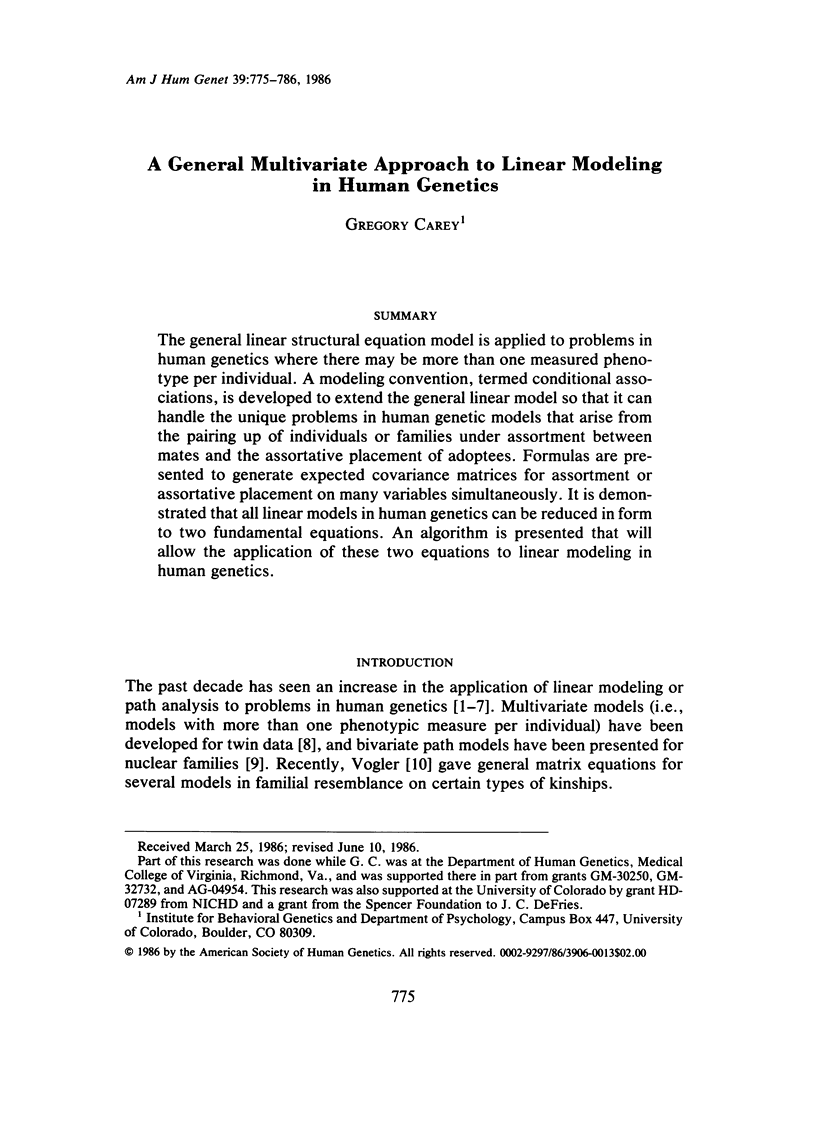

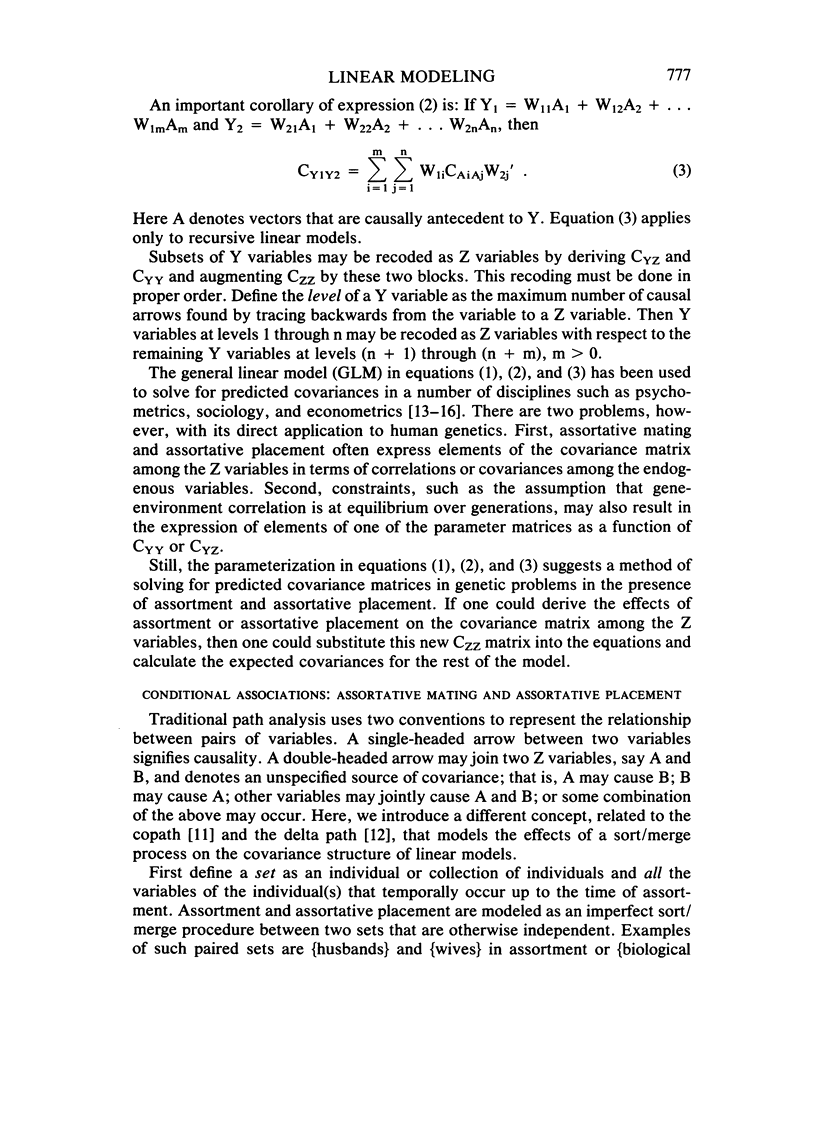
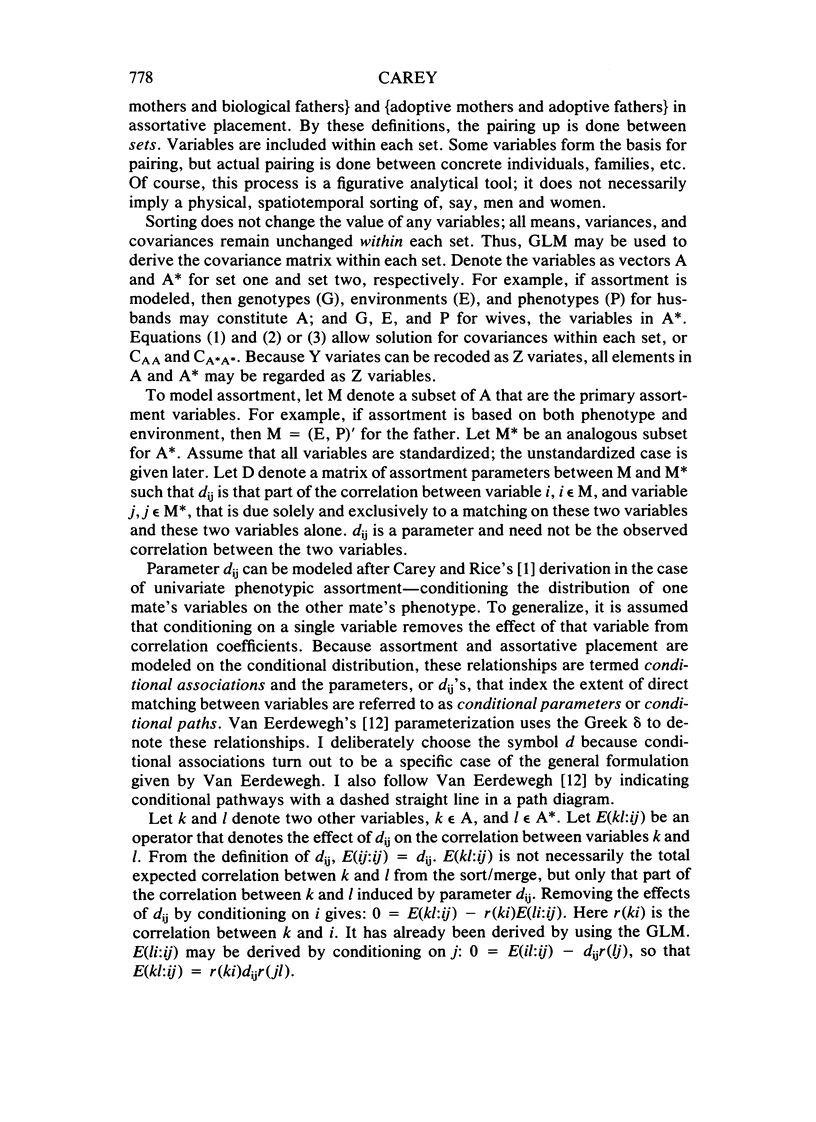
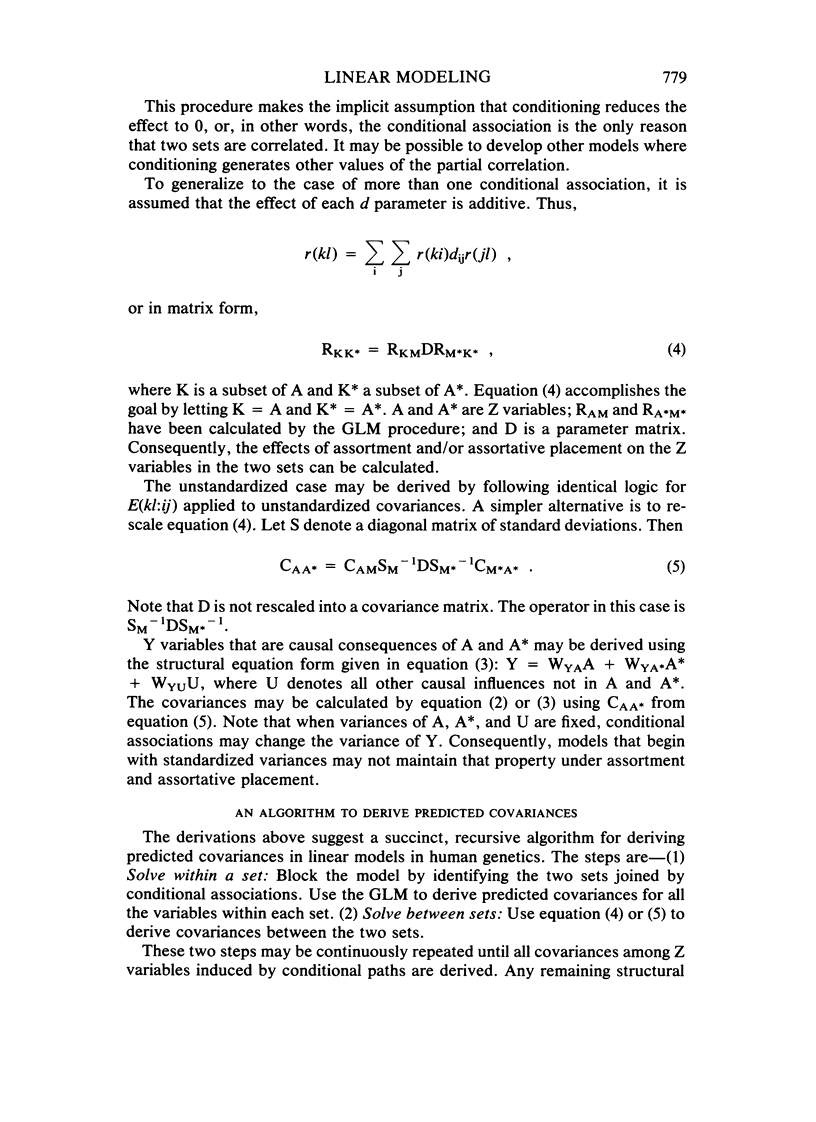
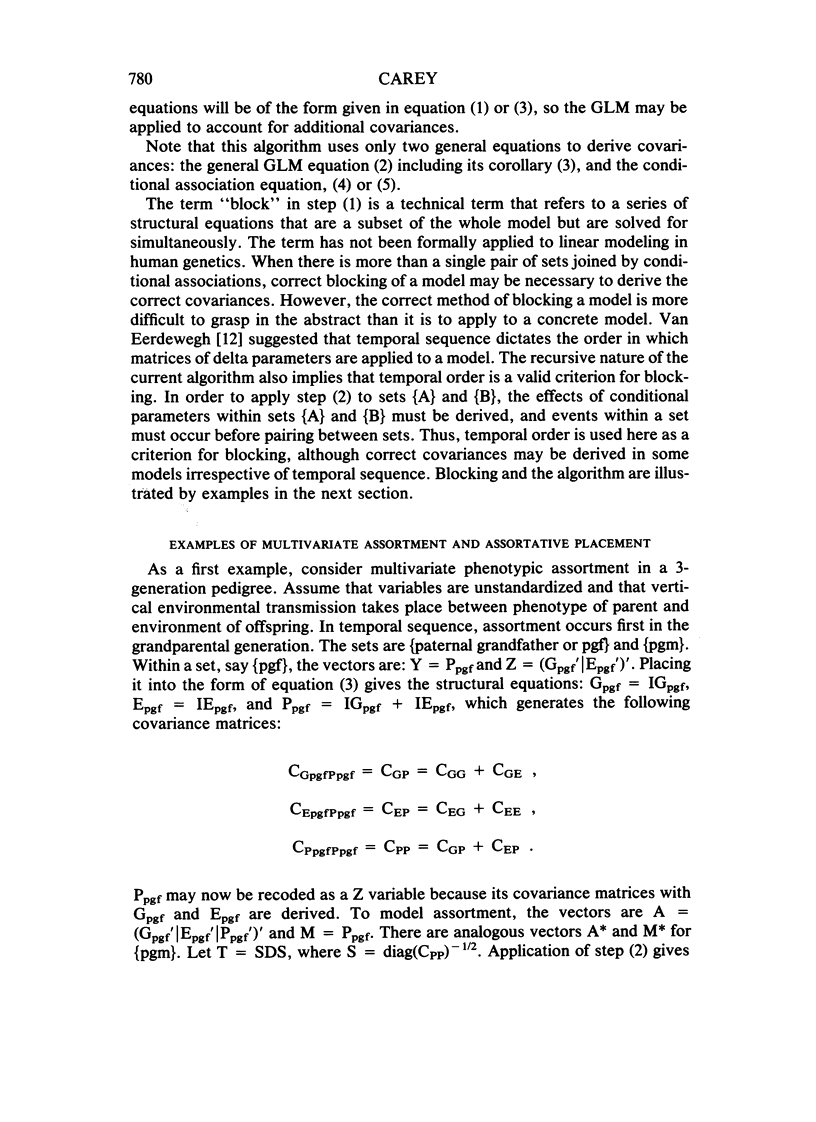
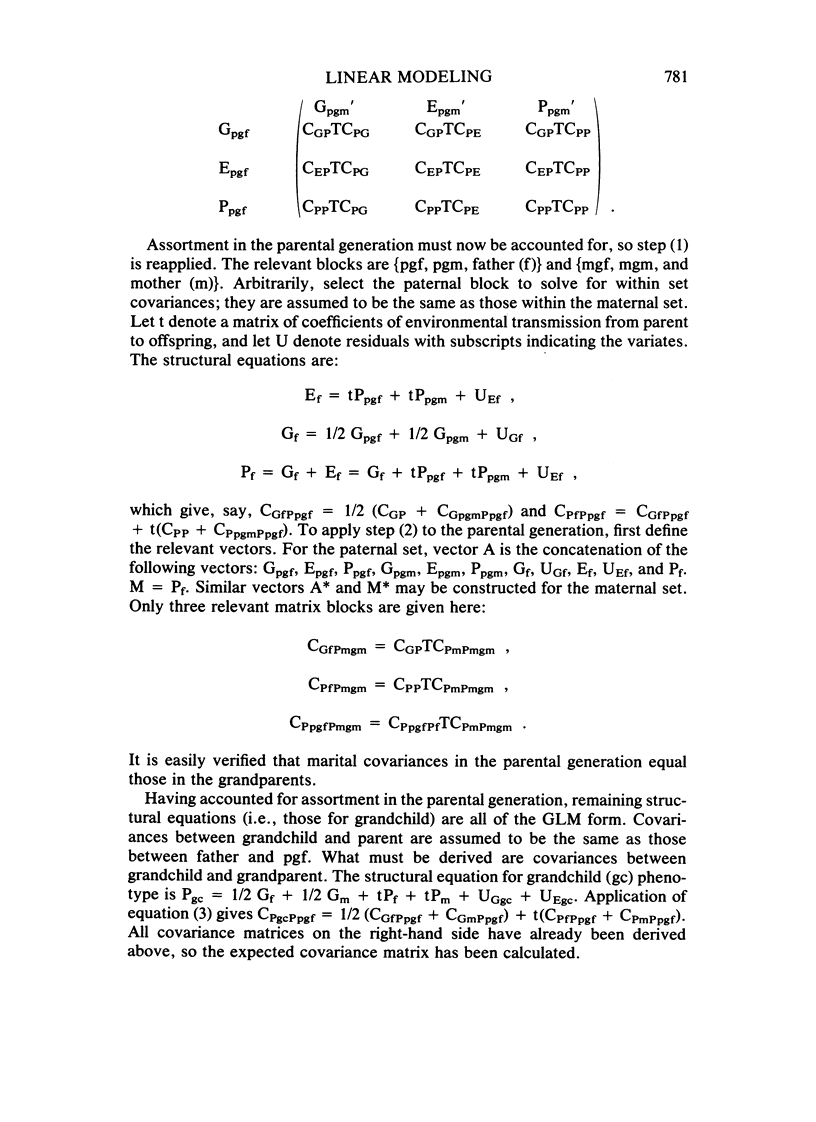
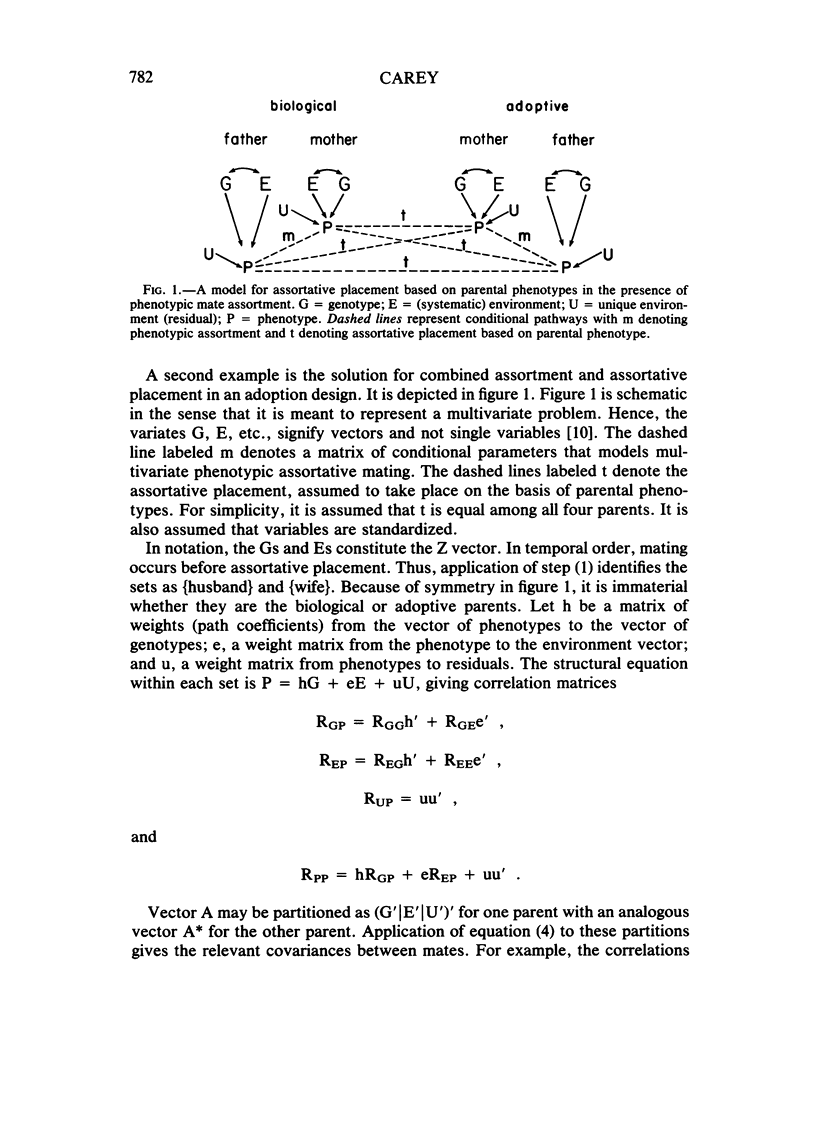
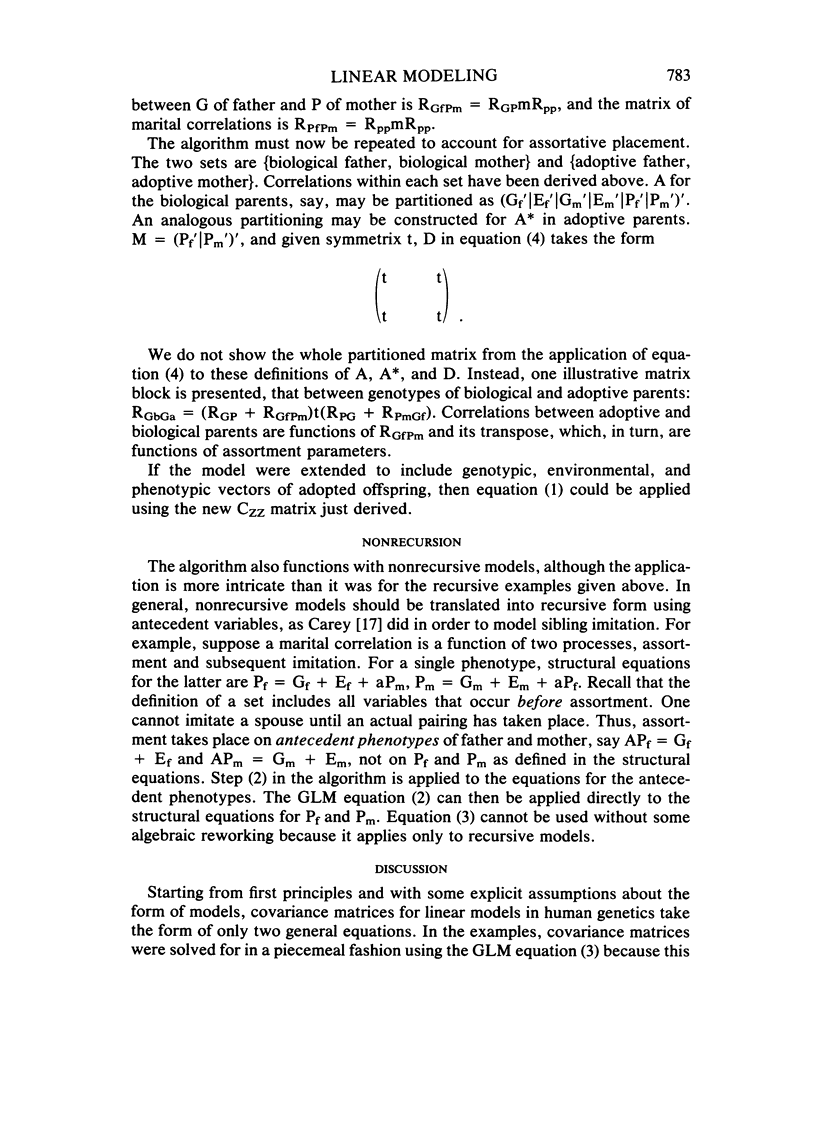
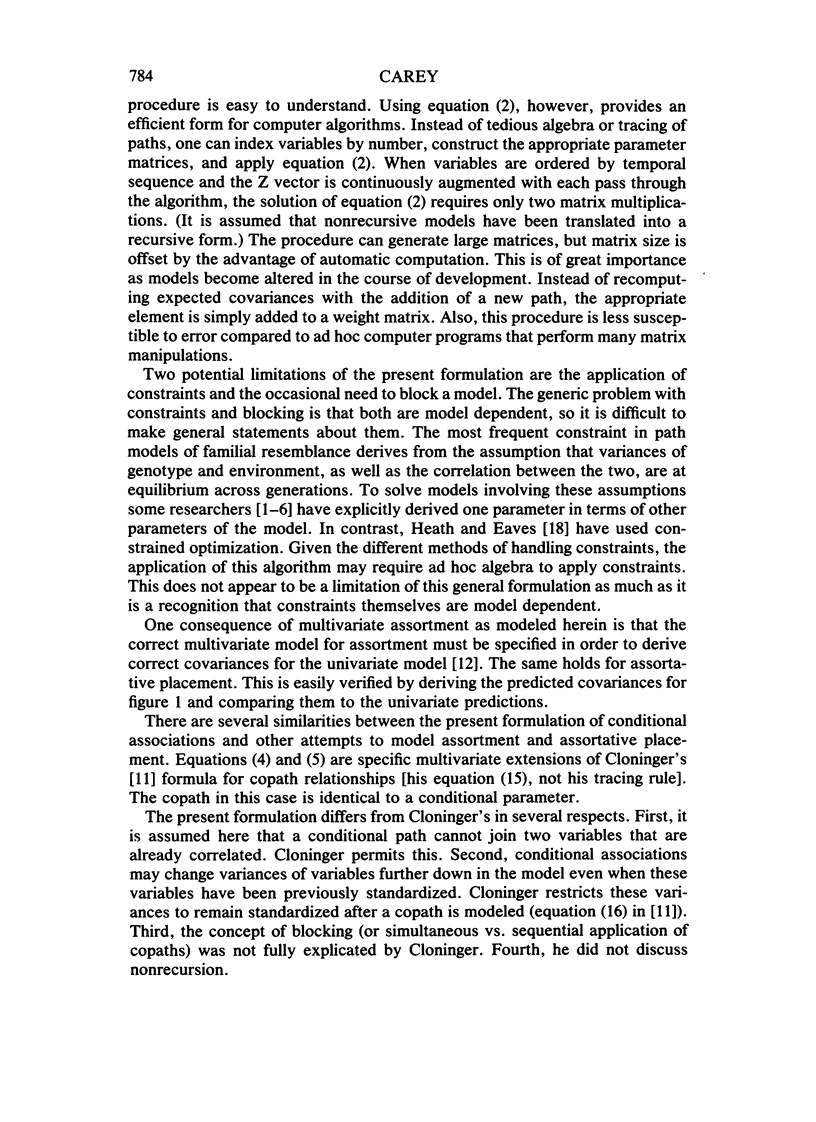
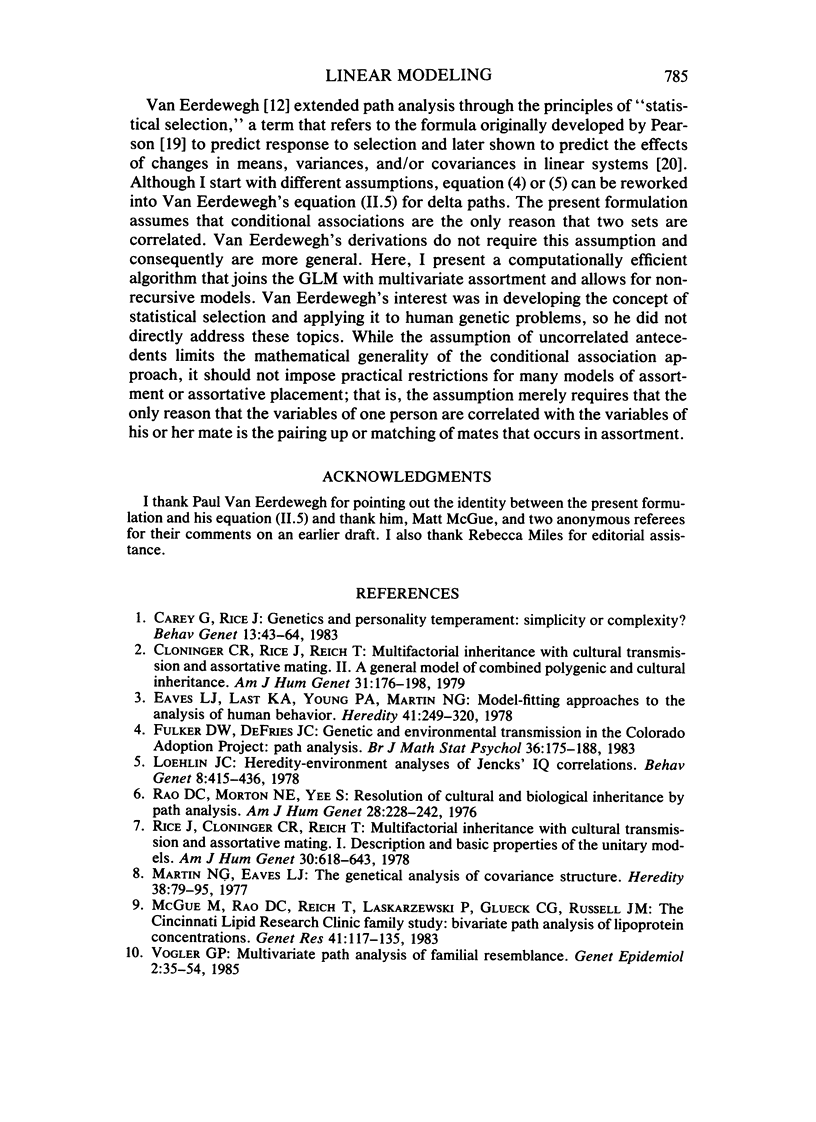
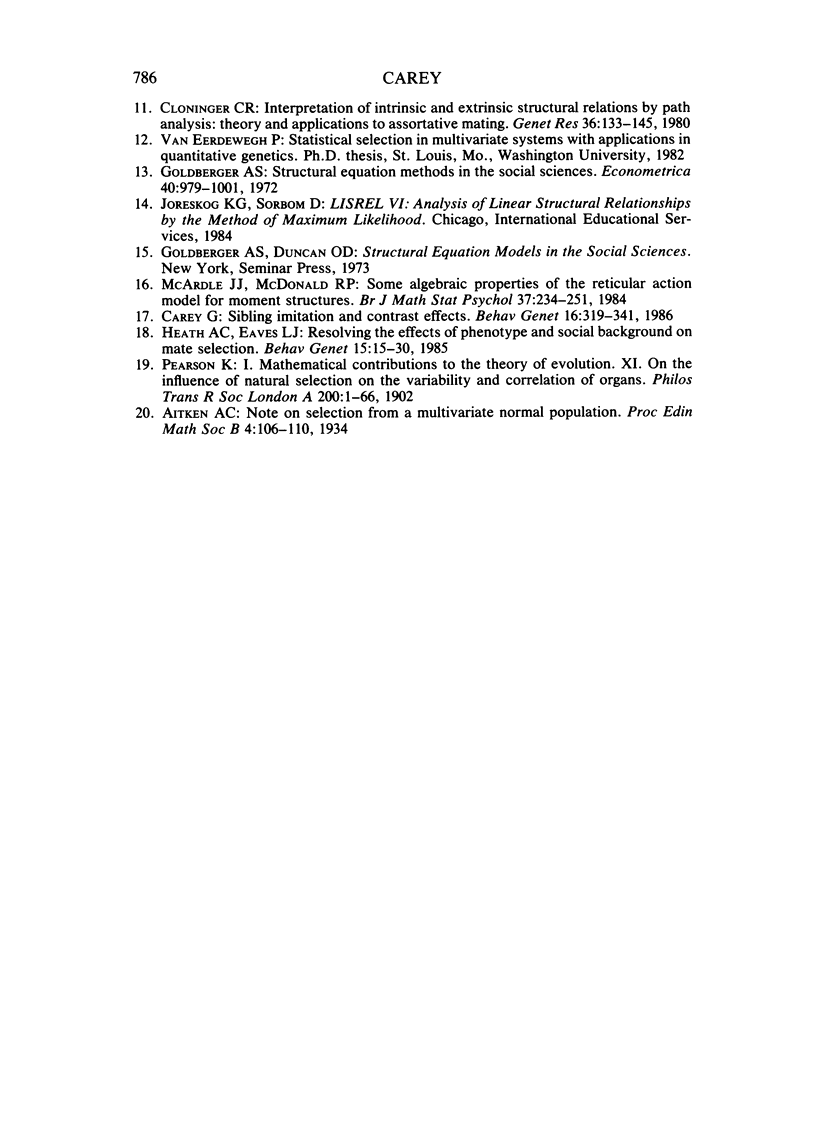
Selected References
These references are in PubMed. This may not be the complete list of references from this article.
- Carey G., Rice J. Genetics and personality temperament: simplicity or complexity? Behav Genet. 1983 Jan;13(1):43–63. doi: 10.1007/BF01071743. [DOI] [PubMed] [Google Scholar]
- Carey G. Sibling imitation and contrast effects. Behav Genet. 1986 May;16(3):319–341. doi: 10.1007/BF01071314. [DOI] [PubMed] [Google Scholar]
- Cloninger C. R., Rice J., Reich T. Multifactorial inheritance with cultural transmission and assortative mating. II. a general model of combined polygenic and cultural inheritance. Am J Hum Genet. 1979 Mar;31(2):176–198. [PMC free article] [PubMed] [Google Scholar]
- Eaves L. J., Last K. A., Young P. A., Martin N. G. Model-fitting approaches to the analysis of human behaviour. Heredity (Edinb) 1978 Dec;41(3):249–320. doi: 10.1038/hdy.1978.101. [DOI] [PubMed] [Google Scholar]
- Fulker D. W., DeFries J. C. Genetic and environmental transmission in the Colorado Adoption Project: path analysis. Br J Math Stat Psychol. 1983 Nov;36(Pt 2):175–188. doi: 10.1111/j.2044-8317.1983.tb01123.x. [DOI] [PubMed] [Google Scholar]
- Heath A. C., Eaves L. J. Resolving the effects of phenotype and social background on mate selection. Behav Genet. 1985 Jan;15(1):15–30. doi: 10.1007/BF01071929. [DOI] [PubMed] [Google Scholar]
- Loehlin J. C. Heredity-environment analyses of Jencks's IQ correlations. Behav Genet. 1978 Sep;8(5):415–436. doi: 10.1007/BF01067938. [DOI] [PubMed] [Google Scholar]
- Martin N. G., Eaves L. J. The genetical analysis of covariance structure. Heredity (Edinb) 1977 Feb;38(1):79–95. doi: 10.1038/hdy.1977.9. [DOI] [PubMed] [Google Scholar]
- McArdle J. J., McDonald R. P. Some algebraic properties of the Reticular Action Model for moment structures. Br J Math Stat Psychol. 1984 Nov;37(Pt 2):234–251. doi: 10.1111/j.2044-8317.1984.tb00802.x. [DOI] [PubMed] [Google Scholar]
- McGue M., Rao D. C., Reich T., Laskarzewski P., Glueck C. J., Russell J. M. The Cincinnati Lipid Research Clinic family study. Bivariate path analyses of lipoprotein concentrations. Genet Res. 1983 Oct;42(2):117–135. doi: 10.1017/s0016672300021595. [DOI] [PubMed] [Google Scholar]
- Rao D. C., Morton N. E., Yee S. Resolution of cultural and biological inheritance by path analysis. Am J Hum Genet. 1976 May;28(3):228–242. [PMC free article] [PubMed] [Google Scholar]
- Rice J., Cloninger C. R., Reich T. Multifactorial inheritance with cultural transmission and assortative mating. I. Description and basic properties of the unitary models. Am J Hum Genet. 1978 Nov;30(6):618–643. [PMC free article] [PubMed] [Google Scholar]
- Vogler G. P. Multivariate path analysis of familial resemblance. Genet Epidemiol. 1985;2(1):35–53. doi: 10.1002/gepi.1370020105. [DOI] [PubMed] [Google Scholar]


